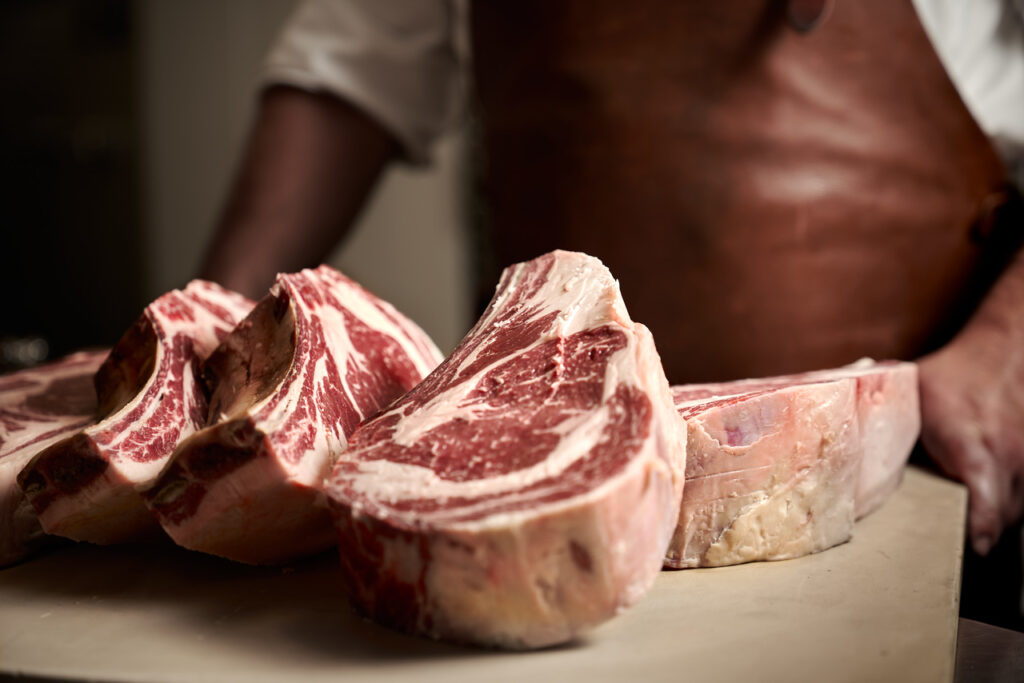
4 Questions To Ask Your Butcher
Talking beef can be tough. There are dozens of terms for different cuts, which can vary from one end of the country to the other, before you venture overseas. Exactly how a piece of beef is cut can make a big difference. Returning from research trips, we have fallen in love with coxão mole or gîte à la noix, leading to interesting chats with butchers back home.
Read our four essential questions for getting the best beef from your local butcher.
Q1. What Breed of Cattle Does the Beef Come From?
A. A traditional British breed. Before trying to open the UK’s best steak restaurant, we travelled the world in search of the perfect steak, from Kobe in Japan to Argentina’s Pampas by way of Italy, Australia and Texas. And our verdict? That the best steaks come from carefully reared cattle right here in Britain.
Q2. What Did It Spend Its Life Eating?
A. Grass. It’s a crying shame, but most international beef now comes from cattle rapidly fattened on grain instead of grass. Beef raised on pasture helps sequester carbon back into the soil. So, all our beef comes from cattle who have lived stress-free lives* and are fed on a natural diet of grass and hay.
*Did you know that when the stressor itself is gone, the adrenaline doesn’t go with it? Instead, it is gradually broken down and expelled. This process changes the chemical composition of the muscle itself – making the meat taste more acidic and gristly.
Q3. At What Age Was It Slaughtered?
A. 24 – 30 months. Cattle are often kept in close confinement and fed additives and growth promoters to be slaughtered at a young age. All to make the process as quick and cheap as possible. Our cattle are grown slowly to reach maturity, and then the best meat is selected and butchered by hand.
Q4. How Was the Meat Aged, and for How Long?
A. Dry-aged for at least 28 days. The process of dry ageing (where the meat is put into a controlled open-air environment – exposing it to air) tenderises the meat. How? The air pulls the moisture out, and the beef’s natural enzymes break the muscles down slowly over time. We recommend a minimum of 28 days for ultimate beefy flavour.
In summary, the key to great steak is happy cattle. Since we opened our first restaurant in 2006, we’ve been working with passionate British farmers doing things the old-fashioned way. Slowly, carefully, always focusing on the health and happiness of the animals and the land on which they graze. We believe that animal welfare, sustainable farming and supporting independent farmers are not just the right thing to do – they’re as close as you can get to guarantee great-tasting beef.
Read our blog to learn more about the different steak cuts and not forgetting how to cook it once you’ve arrived home.
P.S. If you need more time to pop to your local butcher, you can buy our steaks online here.